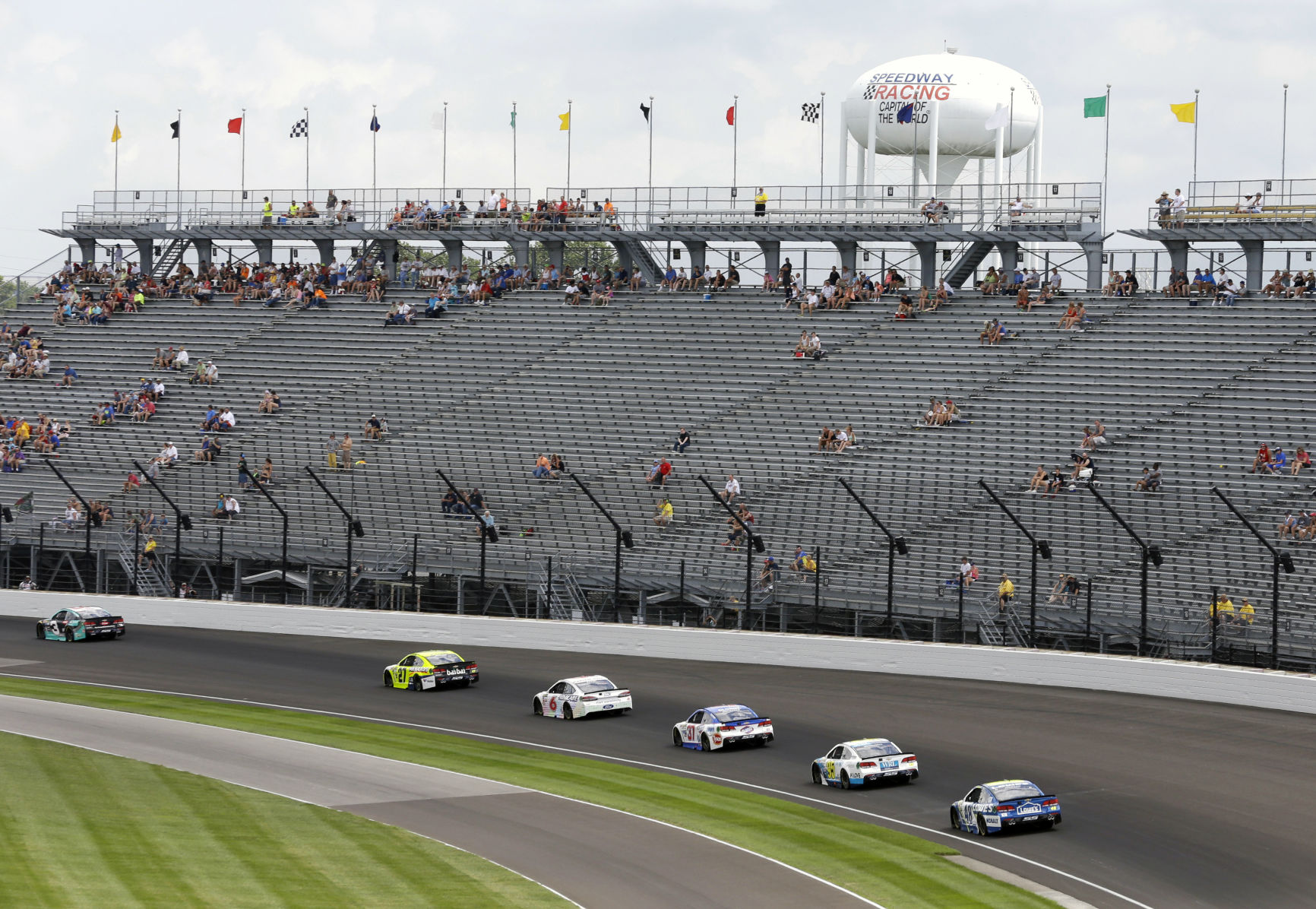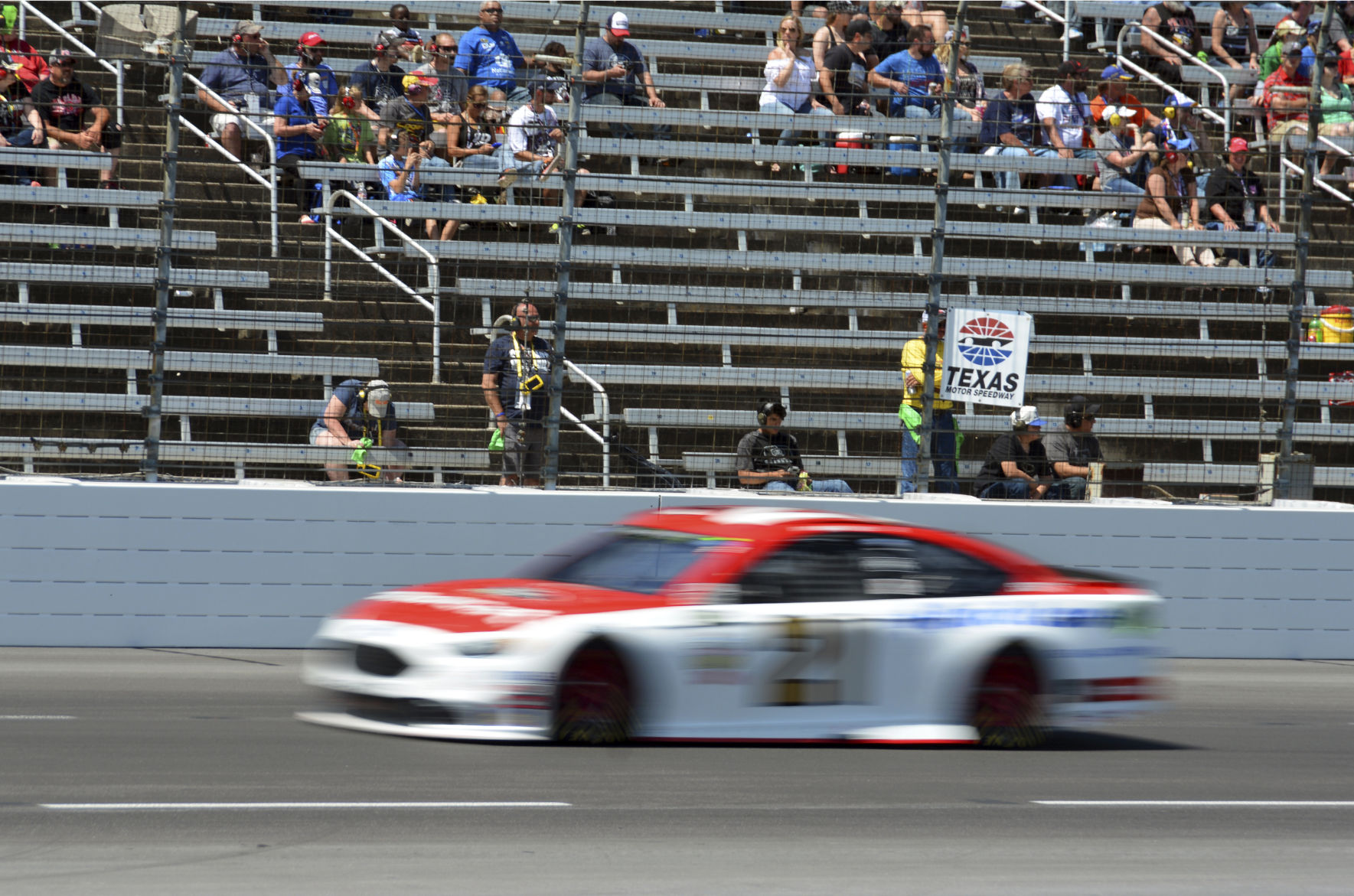From empty seats at the tracks to dwindling numbers watching at home, NASCAR has a popularity problem. That’s undeniable. What’s not so clear is why this sport, which was supposed to be America’s next big thing, has stalled in recent
From empty seats at the tracks to dwindling numbers watching at home, NASCAR has a popularity problem.
That’s undeniable.
What’s not so clear is why this sport, which was supposed to be America’s next big thing, has stalled in recent years. Oh sure, plenty of explanations have been floated, from tedious races and boring drivers to big-name stars retiring and hard-core fans resenting efforts to detach the sport from its Southern roots.
Well, there is an underlying issue that will likely have a more profound impact on its future.
Many Americans — young Americans, especially — just don’t dig cars like their parents and grandparents.
“I know that NASCAR is thinking about it and worried, just as the car companies are worried,” said Cotten Seiler, a professor of American studies at Dickinson College in Pennsylvania and author of the book “Republic of Drivers: A Cultural History of Automobility in America.”
Indeed, if you make your living off the car business, there are plenty of reasons to be concerned.
A study released last year by the Transportation Research Institute at the University of Michigan showed a significant decrease in the share of young Americans with a driver’s license — especially among 16-year-olds, a group that plunged 47 percentage points from 1983 to 2014.
“One of the draws of a sport like NASCAR has always been living vicariously through the drivers,” Seiler said. “Well, if you don’t drive yourself, it’s hard to see how that would be attractive to you.”
On a personal level, I can vouch for this profound cultural shift. When our son turned 16, he was surprisingly in no rush to get a driver’s license. As I dropped him off at high school each morning, the line of child-toting parents created a daily bottleneck in front of the school, while the students’ parking lot was largely empty.
Our son is 18 now. A college freshman.
He still doesn’t have a driver’s license.
“It’s really kind of a curious development,” said John Heitmann, author of “The Automobile and American Life” and a history professor at the University of Dayton. “Of course, it’s driving the auto industry crazy right now. They realize that so many young people are really not interested in their product anymore. That’s why they’re jazzing them up all with all these electronic goodies, thinking that’s what will lure them back into the car.”
Several factors have conspired to make the automobile much less of a must-have product for young people.
Most notably, a generation that has grown up on computers and smartphones views the car as nothing more than a major crimp on their lifestyle. When they’re behind the wheel, they can’t be on all their devices (at least not legally and safely).
This is perhaps the biggest challenge facing the car industry and, by extension, NASCAR.
“We have to get it right,” said Dave Pericak, the global director of Ford’s racing division. “If we get it right, the future will be bright. If we get it wrong, it’s not going to be good.”
The manufacturers are devoting plenty of resources toward making the automobile more attractive to future generations, knowing it has become a bit of an anachronism in our highly connected world, largely unnecessary when you can hook up with friends via the internet or get around heavily congested urban areas cheaply and with less aggravation using ride-share services such as Uber and Lyft.
“We’ve got to figure out how to better incorporate the technology and things that are important to them into our vehicles, so the vehicle will be an extension of them,” said Pericak, who pointed to voice controls and autonomous cars as two of the most intriguing developments.
“Just like iPads and iPhones are an extension of who they are, an extension of their freedom. Our freedom was getting in a car and blasting down the road. It’s just totally different now.”
Adding to the challenge: Environmental concerns that are particularly relevant to young people, many of whom view racing as an energy-guzzling pursuit that, at least symbolically, contributes to climate change.
Pericak said it’s not unfathomable to envision a time when stock cars are powered by electricity, not fossil fuels.
“It was a shocker to me,” he said. “For the younger generation, the environment absolutely matters. The more we can look at hybrid technology and show responsibility as automakers, it will resonate with the younger generation. They will appreciate that.”
In the meantime, NASCAR is taking numerous steps toward connecting with potential fans of the future.
Starting this year, free tickets were offered to those 12 and under for Xfinity and truck series races. More than 10,000 schools are using racing-related materials to study aerodynamics and NASCAR’s “Three D’s of Speed” — drag, downforce and drafting. There are summer programs designed to bring kids closer to the sport, and an increased emphasis on connecting with young fans through social media platforms.
Even that most traditional method of reaching the fan base — the paid sponsorship — often has a youth-oriented theme. For instance, two September races at Chicagoland Speedway were sponsored by Nickelodeon and the Teenage Mutant Ninja Turtles movies.
“There are a lot of kids that are growing up in a social media environment, whereas my generation didn’t,” said Dale Earnhardt Jr., long the sport’s most popular driver but retiring at the end of the year. “They are on these different platforms and we need to go there with people they relate to, to connect to them in those areas.”
Pericak isn’t worried that racing will go the way of the dinosaur. He still sees a fascination with speed and high-tech machines that spans the generations. He knows we are still a nation that relies almost totally on the automobile to get around.
But the current trends do not bode well for NASCAR, even more so than other forms of racing.
The sports has always relied on the association they have with actual street machines, which is why they still pass off today’s sleek racers as the Ford Fusion, Chevrolet SS and Toyota Camry. It’s a selling technique that ties into America’s long love affair with the automobile, a way to build brand loyalty and keep cars moving off the lots.
There was a time when cars such as the General Lee (“Dukes of Hazzard”) and KITT (“Knight Rider”) were the stars.
No longer.
And if fewer young people are driving, and even when they finally do it’s more out of necessity than any affection for being at the wheel, it could strike at the very core of NASCAR.
It already is.
———
Paul Newberry is a sports columnist for The Associated Press. Write to him at pnewberry@ap.org or at www.twitter.com/pnewberry1963 . His work can be found at https://apnews.com/search/paul%20newberry
———
AP Sports Writer Dan Gelston in Long Pond, Pennsylvania contributed to this column.
———
For more AP racing coverage: http://racing.ap.org/



